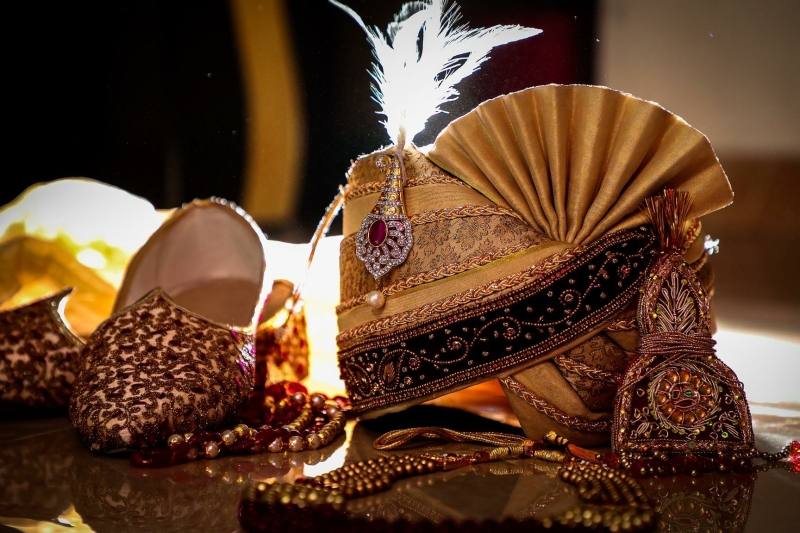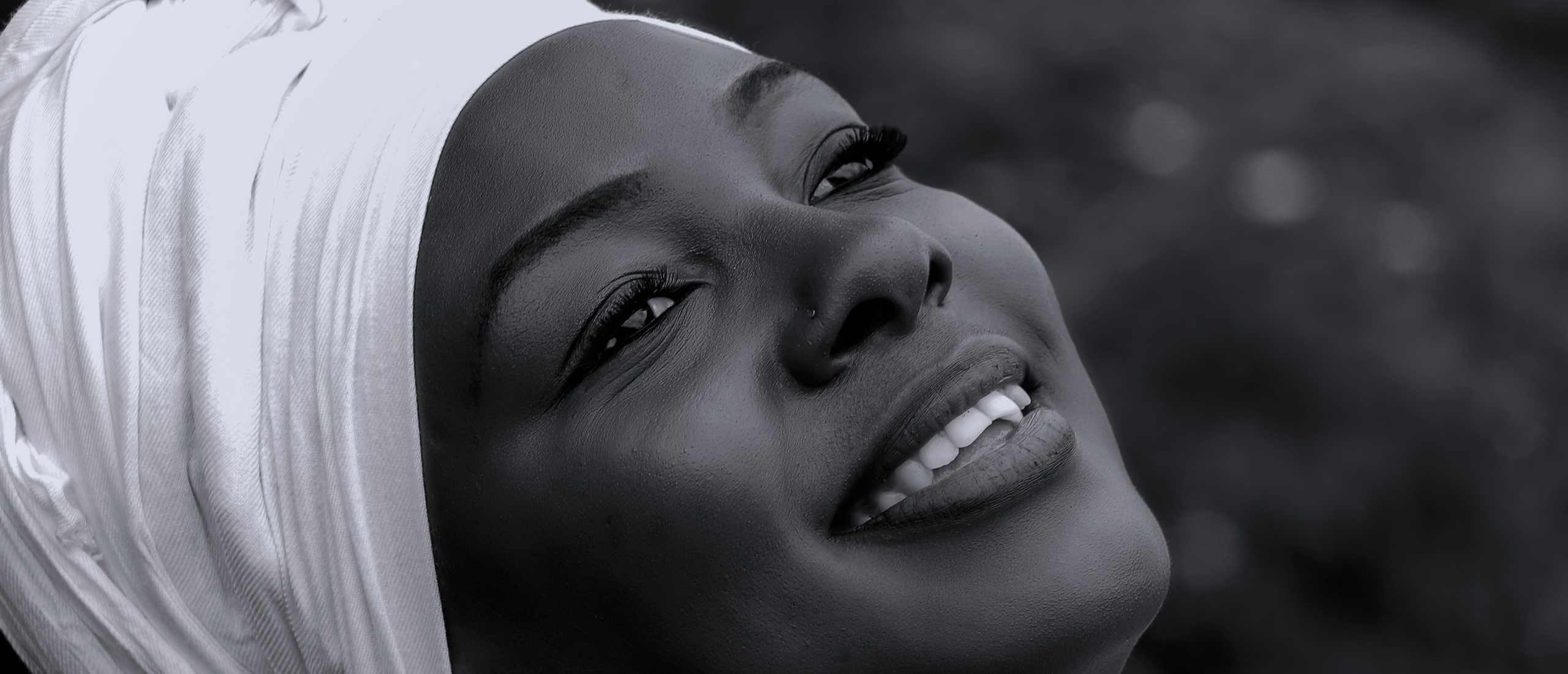Writer: Usha Uppal
Sometimes you will see people wearing a white turban in the yoga school, or you will see them walking on the street. It is striking since people in the West generally do not wear a turban, let alone a white one. The white turban raises many questions: is it a turban for Sikh people? Or is it for kundalini yogis? But aren't those turbans colored? Do women wear them too?
In this article, we will answer these questions and discover why a white turban can be worn (but does not have to be worn) by kundalini yoga practitioners.
We will first dive into the culture and history of the turban in India. After this, we will examine the six benefits of wearing a white turban. Maybe you will want to wear one too, after reading this article!
The turban in India
Let us first go to the land of the turban: India. Of course, there are many more countries where a turban is worn, in Asia and the Middle East. For now, we focus on India, the country where Guru Bhajan, founder of kundalini yoga, came from. He was also a Sikh, and Sikhs wear turbans. By looking at the history of the turban in India and the turban's role in Sikhism, we will start to understand the turban worn in kundalini yoga.
In India, it is common for men to wear a turban, a 'pagari.' There are all kinds of turbans: tightly worn turbans in quiet tones. Or the brightly colored 'tie dye' turbans in Rajasthan that are worn loosely on the head. Sometimes you will see turbans that look messy and appear much smaller.
In ancient India, the turban was of great significance: the 'Paagh-Paaghdi' (the turban) was a token of pride and honor. It was important that men properly wore the turban, demonstrating good character. After a battle, warriors took the turbans of deceased warriors home, and the turban would have an important role in the rituals surrounding the cremation of the dead warriors.
Sometimes the turban would be exchanged between families, at a wedding, or when transferring land. People back then placed a lot of trust in the turban: the family's reputation was involved.

The Paagh-Paaghdi demonstrated the caste, sub-caste, village, region, religion, sect, family, and country the wearer was from.
The Rajasthani turban
The Rajasthani turban is worn loosely on the head, often in a wide circle, in bright colors such as red, yellow, pink, or 'tie dye.' And the bigger the turban, the higher the wearer's social status.
Rajasthani men, who live in the desert of India, wear the turban to keep their heads cool during the day. The turbans are around five meters long, are made of cotton, and the seams are unstitched, like most turbans in India.

The men often put the turban in a bucket of water and on the turban in the morning. This way, their heads can be kept cool all day.
The turban can come in handy in the countryside: sometimes, it is used as a rope, to cross a river, or to lead a buffalo, for example.
The Sikh turban in India
The 'dastar,' the Sikh turban, plays a vital role within Sikhism. It all started with Guru Nanak, the founder of Sikhism. He wore a turban, and since then, all Sikhs have worn one. The Sikh turban has very different meanings than the Rajasthani turban. For Sikhs, wearing a turban is an expression of their faith and respect for their faith.
Not all Sikh women wear a turban, but many of them do. The Gurus have stated that the dastar is also for women. All Sikh men wear one.
As you might have noticed, Sikhs wear all kinds of colors when it comes to their turbans. They may choose what colors to wear; usually, the colors are not bright, but they are quiet tones such as maroon, black and light blue. At religious holidays one will often wear orange or light pink at a wedding, and khaki for men serving in the military. Sometimes Sikhs adapt the colors of their turban to an event they attend: for example, wearing black and navy blue when attending a formal occasion. White can also be worn, especially by women.

In the seventeenth century (Sikhism is about five hundred years old), the tenth and last Guru of the Sikh faith, Guru Gobind Singh, started baptizing Sikhs. From that moment onwards, all baptized Sikhs were part of the 'khalsa.' The khalsa is the community of baptized Sikhs. From that moment on, the growing and preserving of hair, the 'kesh,' became a part of Sikhism. The kesh is worn underneath the turban; the turban protects and holds the kesh. So, Sikh men do not cut their hair or shave their beards. The older a man becomes, the longer the hair and the bigger the dastar will be.
Women do not cut their hair, either. If they choose to wear one, their dastar looks different from the men's. It is smaller, higher on the head, and often white. Sometimes a veil is worn over the turban, not covering the face but the turban and shoulders.
For Sikhs, wearing a turban means focusing on the spiritual, not the worldly aspects of life. His turban helps him to stay strong in the face of temptations and distractions. The turban reminds him of his true mission: to be a man of honor, to free humanity, and to live with God.
The dastar also protects the 'Dasam duar,' the tenth opening of the human body. There are nine openings in the human body: eyes, nostrils, ears, mouth, anus, and genitals. Sikhs believe a tenth opening is located on the top of the head. This is where the crown chakra is located, according to Hinduism. The tenth opening is spiritual: when a man has resisted worldly temptations and distractions, he will experience the Dasam duar and feel awe, bliss, and humility.
Now back to kundalini yoga: Guru Bhajan, the founder of kundalini yoga, was born a Sikh. He was from Punjab, where Sikhism originated and where the great Golden Temple of the Sikhs is located (in Amritsar). Guru Bhajan was very familiar with Sikhism and knew about the benefits of this faith. He incorporated aspects of Sikhism into kundalini yoga, one of which is the wearing of the turban.
The white turban in kundalini yoga
The reasons practitioners of kundalini yoga often like to wear a white turban are partially rooted in Sikhism. Below you can read about the main reasons. It must be said, however, that not all kundalini yogis wear a white turban: there is no obligation whatsoever.
1 Protecting the crown chakra
By practicing kundalini, your life force (the kundalini) may rise. When this happens, it can be helpful to protect your crown chakra. This way, the turban can contain the kundalini energy that can rise out of the crown chakra. This way, you can keep the life force energy within your energy system (chakras and aura). It grounds the spiritual energy that is freed by kundalini yoga practice.
2 The turban is beneficial for the third eye
The pineal gland, which corresponds with the third eye, is in the middle of our skull. The turban is a protective layer placed over this area. Without protection, the third eye can suffer from an overload of stimuli, preventing focus and clarity of thought. By wearing the turban, you will be able to have more focus.
3 De witte kleur van de tulband is neutraal
According to Yogi Bhajan, founder of kundalini yoga, white clothes expand the wearer's aura. This enables the wearer to keep external energies at a distance and helps to maintain balance. The wearer's aura becomes more vital, and the wearer will be more grounded in their energy.
White contains all colors of the color spectrum and has a high energetic vibration.
If you are interested in wearing white by kundalini yogis, please read our blog article.
5 Keeping the ego in check by wearing the white turban
In the West, people generally do not wear a turban. Many people will look at the wearers of turbans and might not understand the reasons for wearing one. Maybe people will judge the wearer. This challenges the wearer: they must be firm in wearing it and withstand the looks and perhaps judgment of others. However, if you feel good by wearing white during your kundalini yoga practice and perhaps even just in life, it is worth it to withstand the judgment of others. And who knows, you might inspire others to do the same.
6 The white turban is a token of respect
The white turban can express respect for the kundalini yoga tradition. By wearing it, you show others what is important to you—the white turban honors the tradition, the gurus, and everything that kundalini yoga represents. Wearing the turban can be a way of staying connected to these roots.
Conclusion
Wearing the white turban is a personal choice; it is by no means necessary for the practice of kundalini yoga. Some teachers always wear one, and some never wear one. Some practitioners wear one daily, the whole day, and others don't.
There are different ways of wearing the white turban: you can wear it like a Sikh, tight and prominent. Or loosely around the head, like a headband or a small cap. There are so many variations. It is crucial that it feels good and that it enhances your kundalini yoga practice.
We hope you enjoyed reading this article and wish you all the best on your kundalini yoga journey!
Sat nam.






